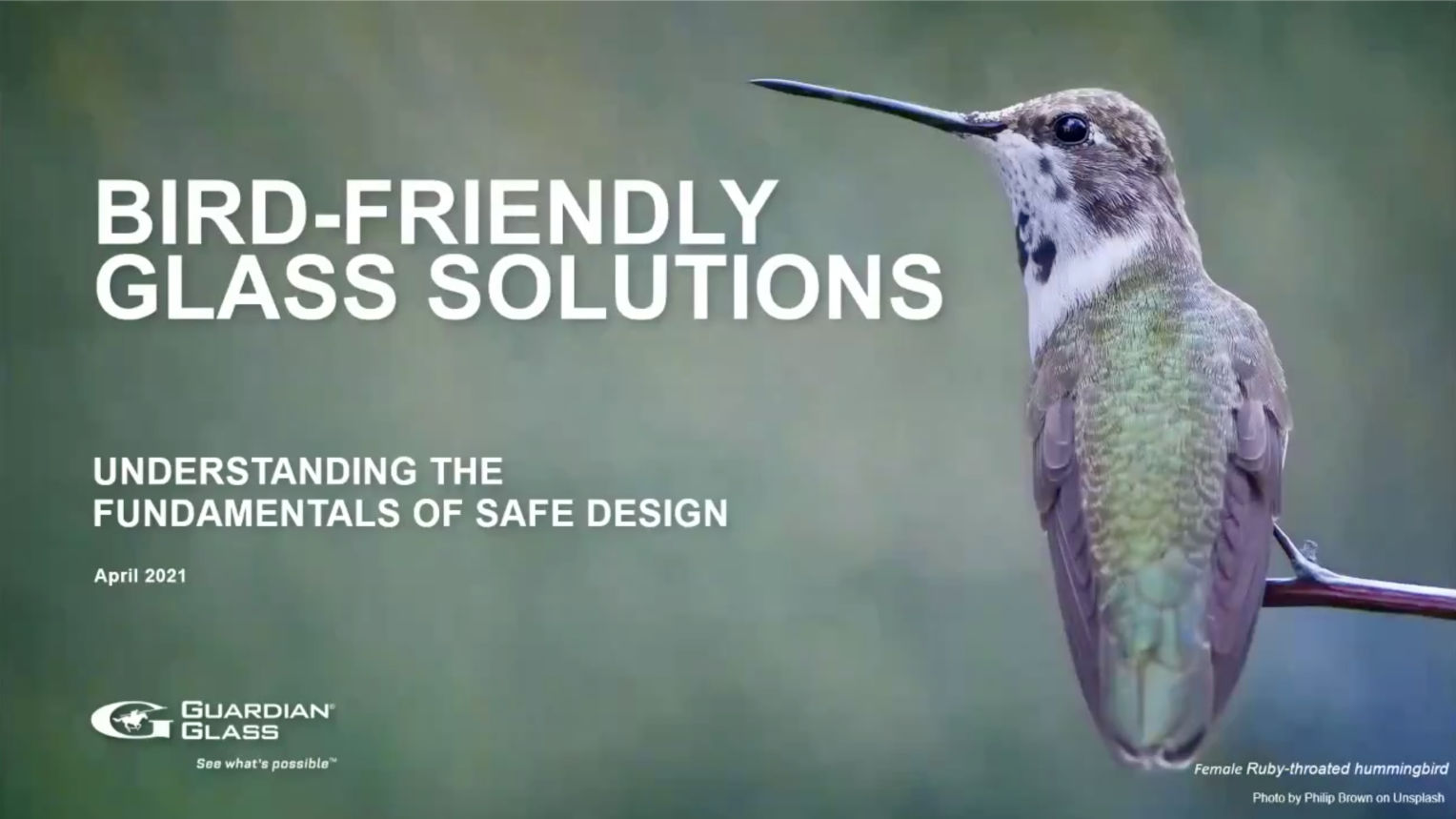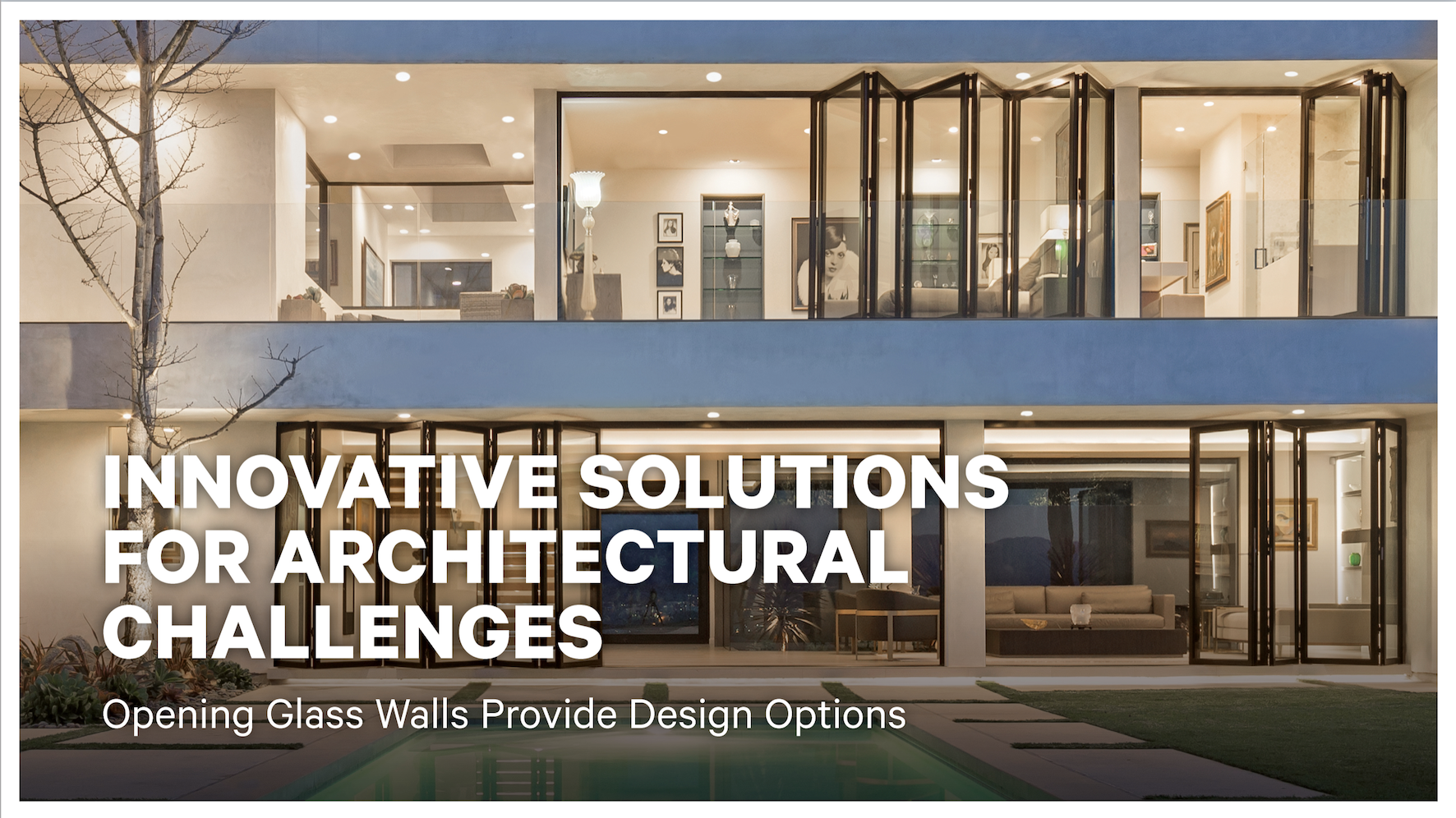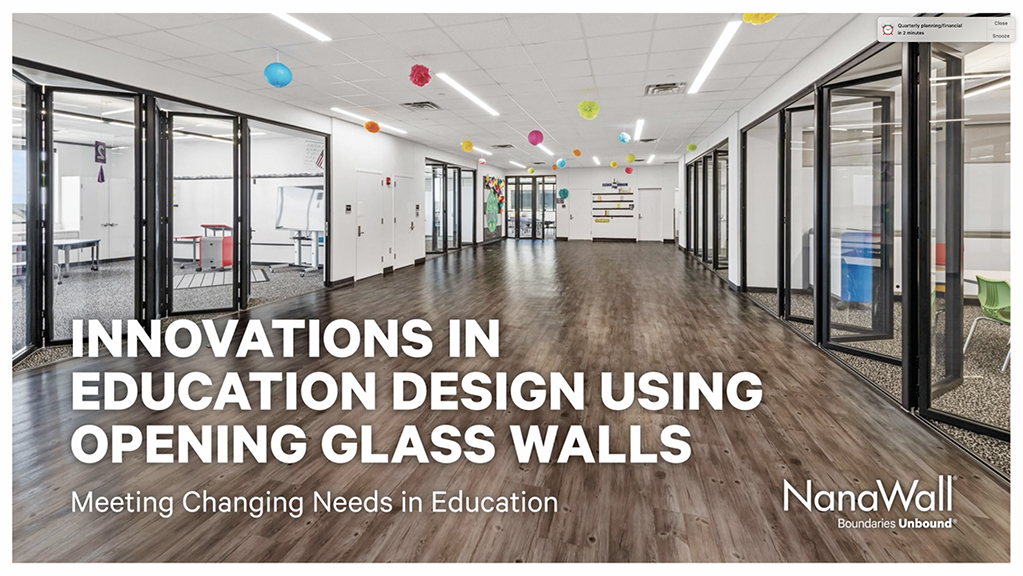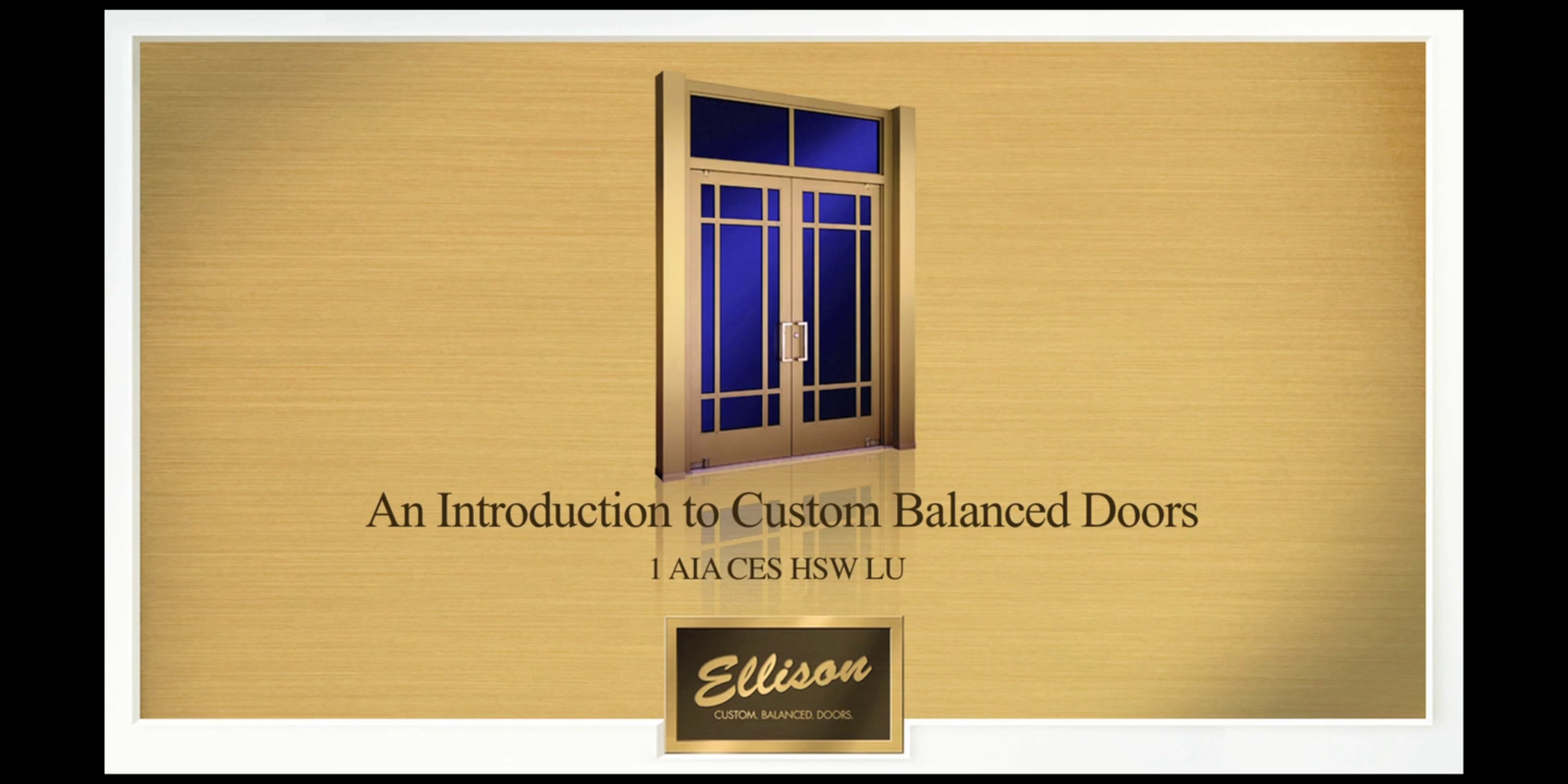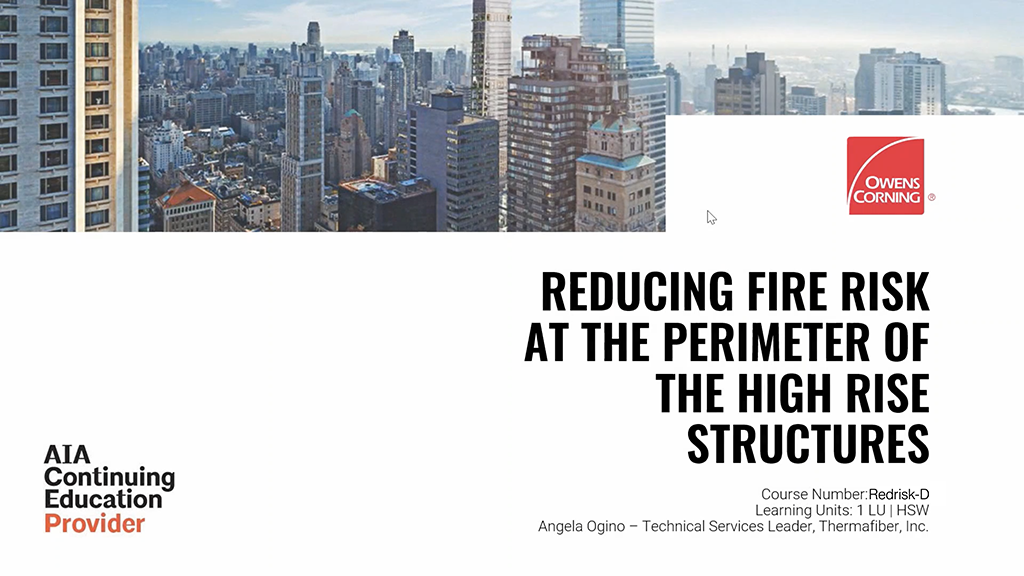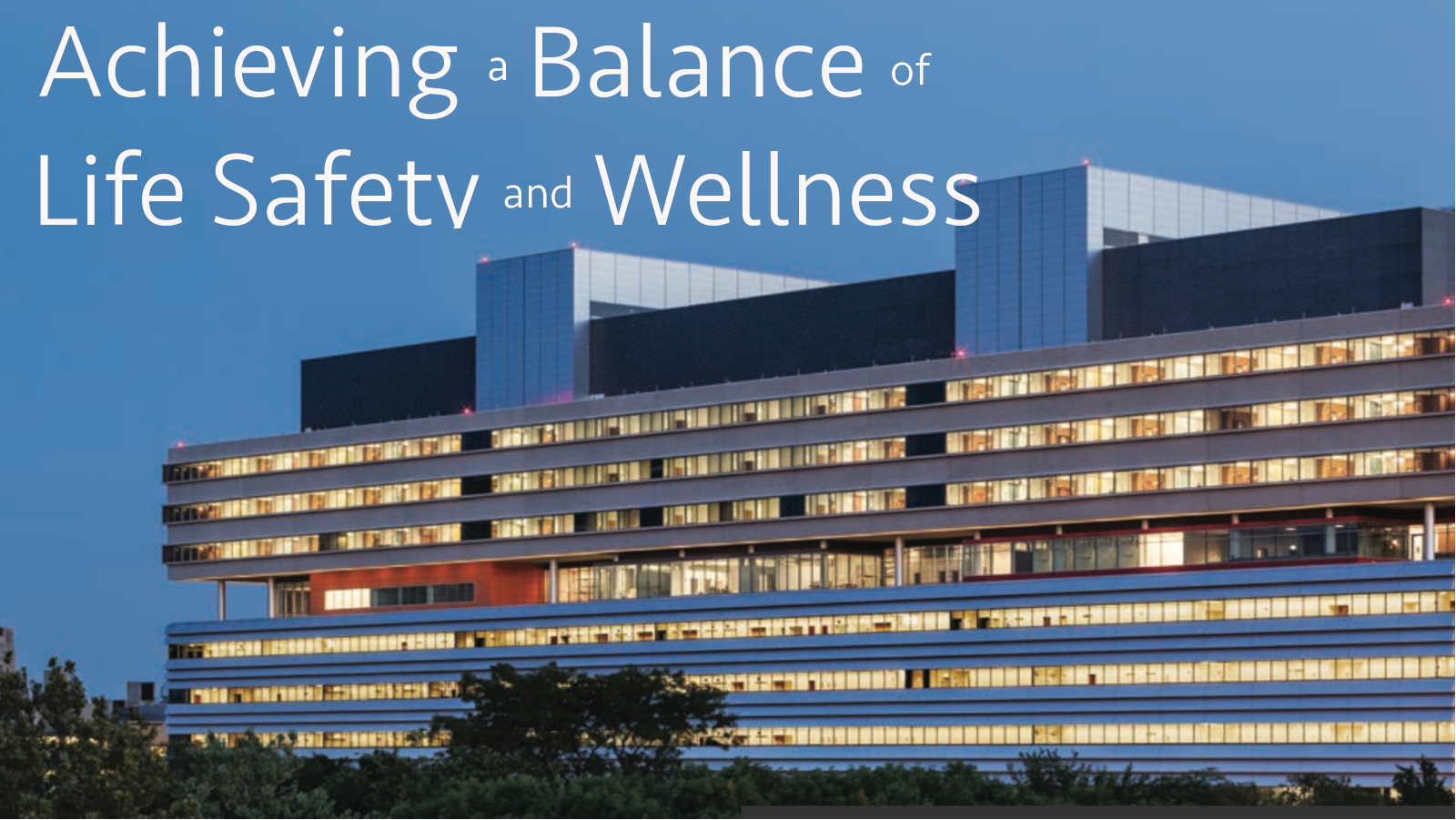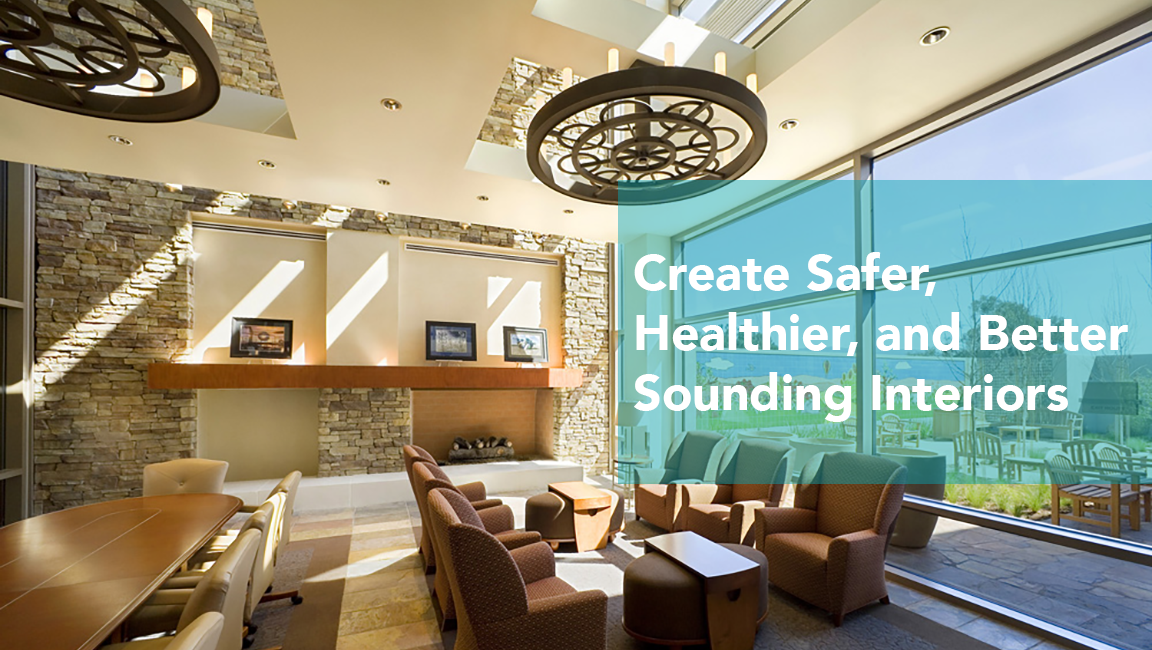This course will describe the benefits of moveable glass walls in education environments from K-12 through higher education. It includes a comprehensive look at design options, framing and installation options, interior and exterior connecting applications, acoustical attenuation, daylighting, and 21st Century Educational design.
HSW Justification:
Privacy, daylighting, on-demand teaching flexibility, improved teaching outcomes and student and teacher health benefits are the primary focus of this course.
Learning Objective 1:
Identify and recognize the significance of flexible space in school design to safely accommodate variable educational needs
Learning Objective 2:
Assess the health and welfare aspects of glass wall systems in terms of providing daylight and views to students, teachers and staff.
Learning Objective 3:
Explain the importance of acoustics and the impact on student performance, and creating a better indoor environment.
Learning Objective 4:
Determine ways to incorporate the design principles presented into building project documentation as shown in project examples.
...Read More
Show Less










